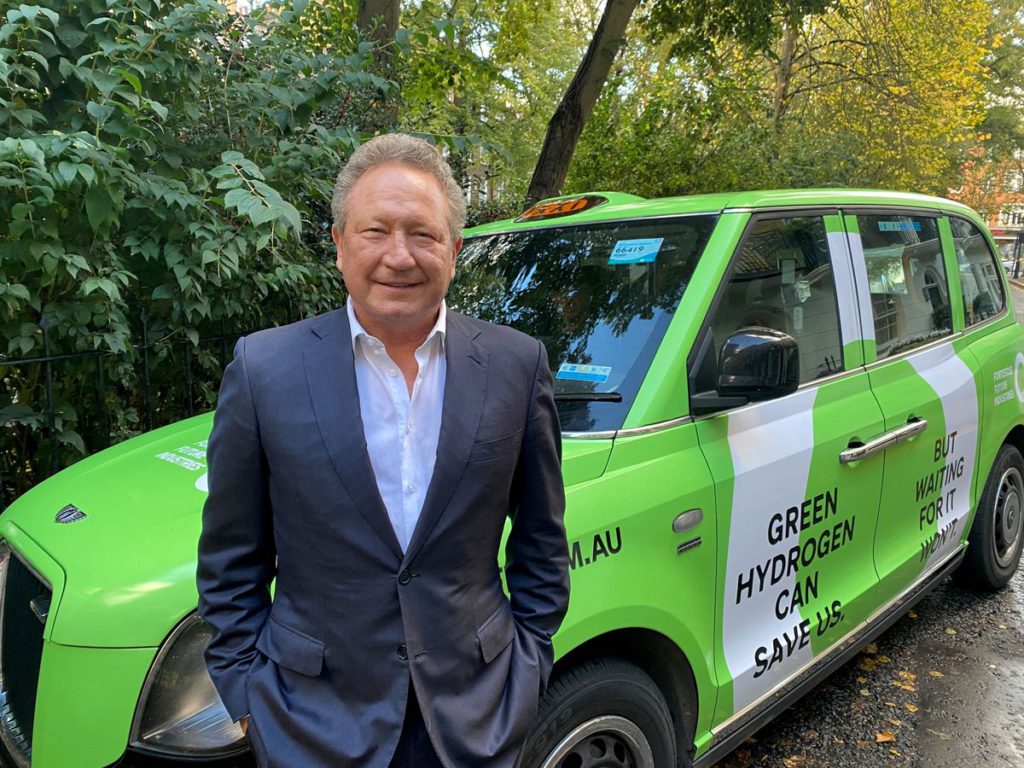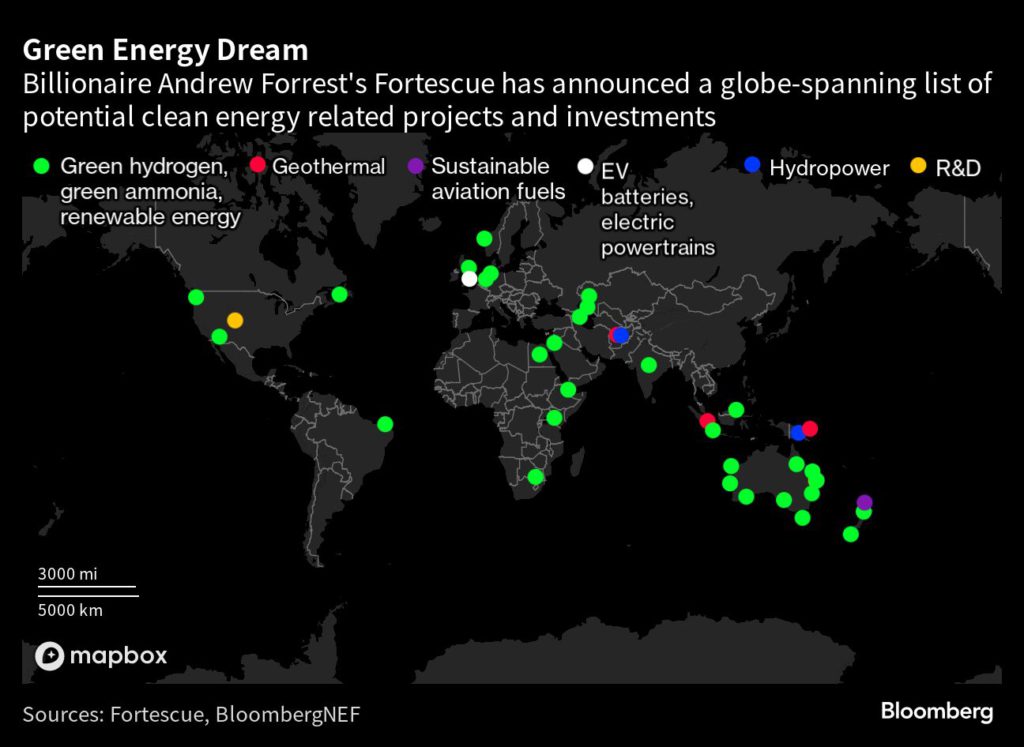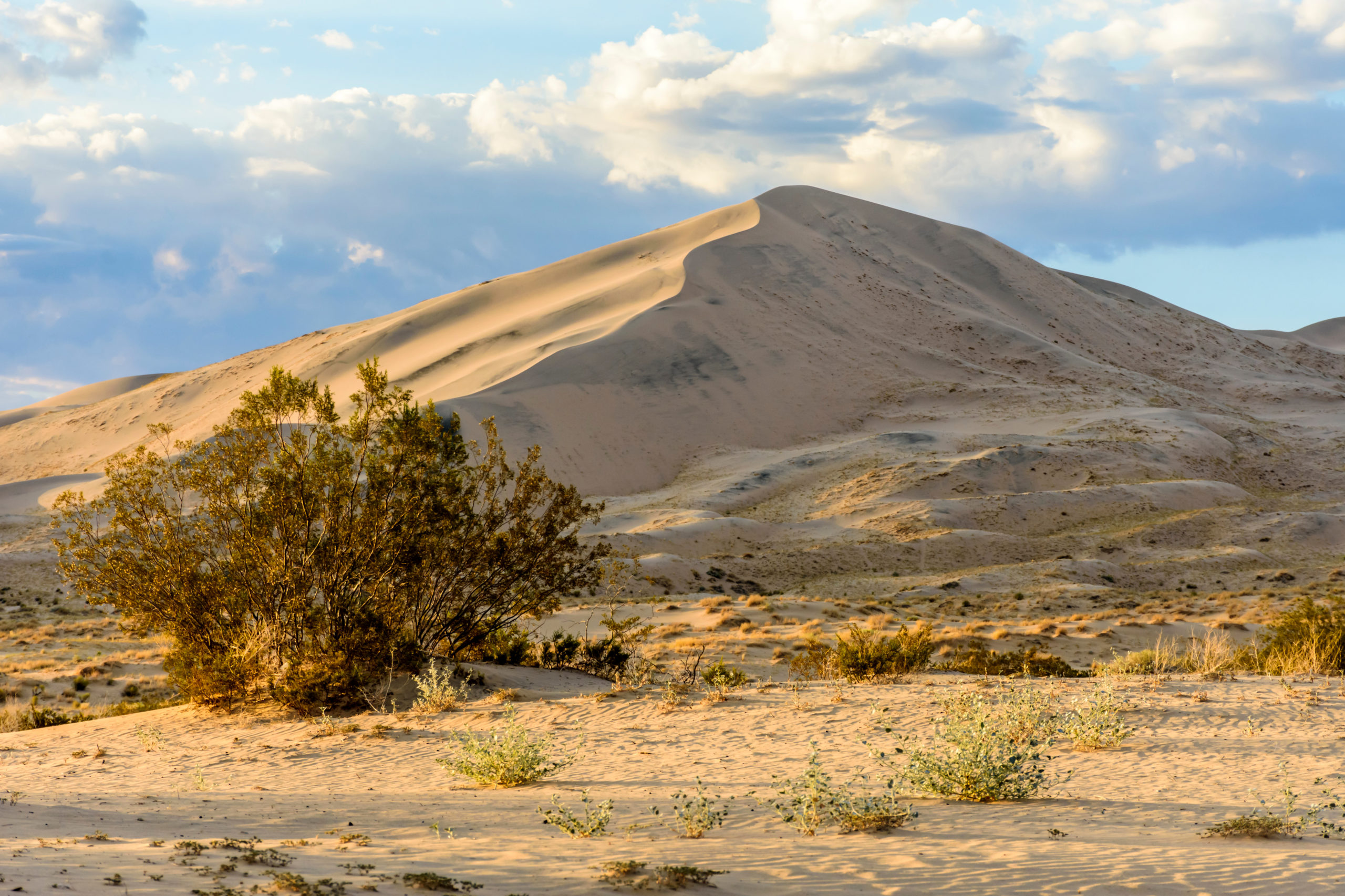Fortescue brushes aside worries, says exits show resolute board

Executives at Fortescue Metals Group Ltd., who have held a series of investor meetings following a string of high-level departures, have brushed aside governance concerns and said shareholders welcomed the swift action.
Less than a month ago, three high-profile executives left the world’s fourth-largest iron ore miner in one week, including former Reserve Bank of Australia deputy governor Guy Debelle, who stepped down from the clean-energy arm of the business, and Fiona Hick, head of the metals division.
The exits revived concerns over churn at the company, along with a debate on the company’s plan to shift from iron ore giant to green-energy powerhouse — and over the role played by its forceful founder, top shareholder and chairman, Andrew Forrest.
“We talked about the transition of the leadership, but once we’re through that, it’s all about how the business is going,” Mark Hutchinson, chief executive of Fortescue Energy, said in an interview with Bloomberg News in New York on Tuesday.
Hutchinson, echoing comments by Forrest, said Hick was “not aligned” with Forescue during her tenure which lasted less than six months, and that the company moved in response.
“The response from investors was quite positive,” he said. “They understood that if you have got something which doesn’t work, make the decision and move on — rather than let it fester.”
Fortescue shares have pared recent losses, but credit agency Moody’s this week became the latest organization to highlight the risks associated with high turnover in senior ranks, the potential impact on strategy, operations and ultimately the group’s balance sheet.
Speaking alongside Dino Otranto, the new chief executive of the metals arm, Hutchinson said investor and analyst concerns over the future of iron ore or excessive green spending were unwarranted. The decision to drop a policy to allocate 10% of earnings to the green-energy arm, allowing all new projects to instead compete for capital on an equal basis, was simply because the guardrail had “served its purpose,” he added.

Iron ore still provides nearly all of Fortescue’s $17 billion of annual revenue. Yet Forrest has in recent years announced ambitious plans for Fortescue Energy, the green arm established in 2020, including producing 15 million tons globally of green hydrogen using renewable power by 2030. That equates to nearly half of the total global supply anticipated by BloombergNEF that year.
Final investment decisions on five new energy projects, spread from Kenya to Australia, will be taken before the end of the year. Institutional investment partners could be brought in, Hutchinson added, moderating the outlay. Plans to push into battery and electrolyzer manufacturing in the US, meanwhile, will benefit from local incentives.
“We still have the dividend policy, we are not going to change that,” he said. “And we are not going to change our leverage.”
Forrest, he said, would remain central. “Andrew plays a massive role for the company. He saw a gap in the iron ore market. Over the last three years, he has seen another opportunity, the green molecule.”
Fortescue currently trades broadly in line with the metals sector, albeit below larger peers like Rio Tinto Group and BHP Group. Hutchinson said Fortescue hoped to surpass them.
“What we’re trying to do here is change the price-earnings multiple of the company from five to 10, to 10 to 20,” he said. “We understand it’s been difficult to value the energy side of the company. That’s what we have to help investors do.”
(By Joe Deaux, with assistance from Yvonne Yue Li and Jessica Zhou)
More News
{{ commodity.name }}
{{ post.title }}
{{ post.date }}



Comments